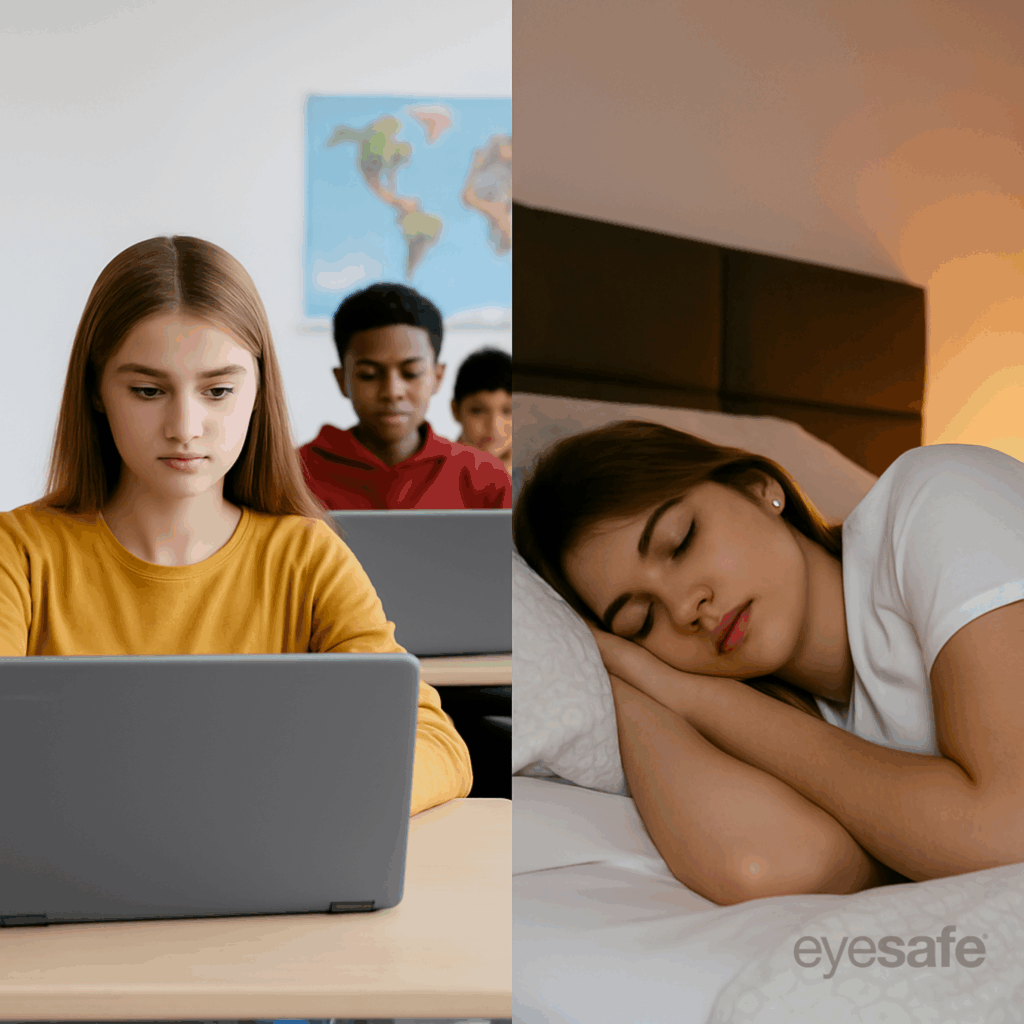Today’s students spend more time in front of screens than ever before. On average, children ages 8–12 in the United States spend 5 hours a day watching or using screens, and teens spend up to 9 hours.1 From studying and reading to connecting with friends and streaming entertainment, screens are woven into nearly every part of children’s lives.
But screen exposure, especially before bed, can affect how well students sleep – potentially reducing next-day alterness, mood and focus. Blue light, particularly in specific wavelength ranges, plays a key role in regulating the body’s circadian rhythm, the internal clock that helps regulate our sleep.
Why Timing and Environment Matter
Today’s students spend more time on screens than ever before, both in and out of the classroom. This increase in digital exposure is especially noticeable in schools, where tablets, and Chromebooks have become standard learning tools.

Over time, this can influence classroom participation, academic performance and social-emotional learning. That’s why creating healthier digital learning environments is becoming a priority. Lenovo is one of the leading companies to offer Eyesafe® Blue Light Screen Protectors for schools to support student wellbeing, eye comfort and sleep.
Supporting Healthy Digital Habits
Simple, effective ways to support student wellbeing include:
-
Follow the 20-20-20 Rule: Every 20 minutes, look at something 20 feet away for at least 20 seconds.
-
Keep screens at arm’s length: A comfortable viewing distance can help reduce visual fatigue.
-
Limit screen use 1–2 hours before bedtime: Reducing blue light exposure in the evening helps support natural sleep rhythms.
- Install an Eyesafe Screen Protector on all student devices: A simple way to reduce blue light exposure during screen use, with no settings to adjust.
These practices help reduce visual fatigue, improve focus, and protect sleep, especially when paired with display technologies designed to filter specific blue light wavelengths.
The Eyesafe Approach
Eyesafe technology is embedded into screen protectors to reduce blue light exposure in the range that affects visual comfort and disrupts sleep. It is developed with leading eye doctors and engineered to maintain vivid screen color to support student wellbeing and comfort.
By bringing this technology into student devices, like the Lenovo Chromebooks mentioned earlier, schools and families can help support students’ focus during the day and better sleep at night.
Sources
1 Office of Children’s Mental Health, Healthy Screen Time in a Digital World, April 2022, https://children.wi.gov/Documents/ResearchData/OCMH Fact Sheet_April2022_Healthy Screen Time in a Digital World.pdf

